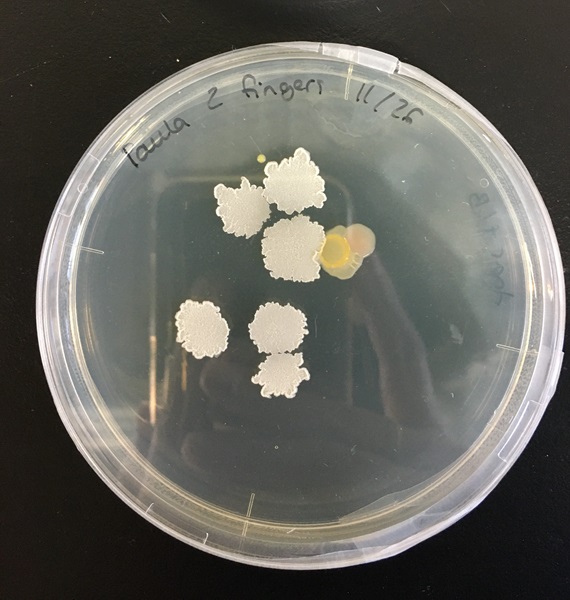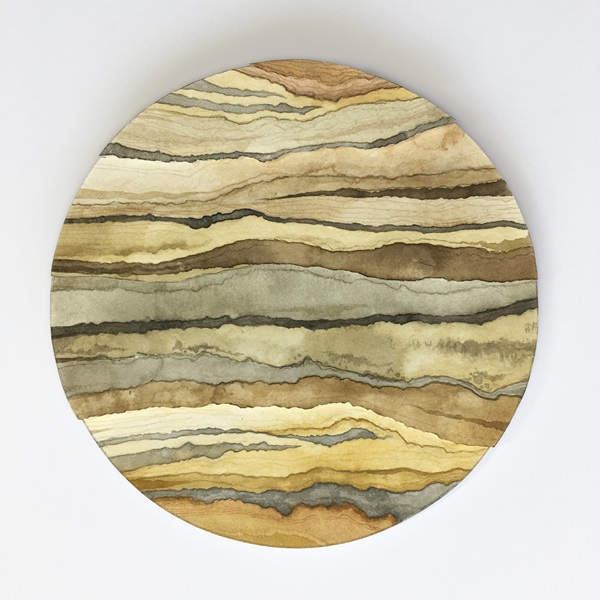'Under Their Lenses' results from the collaborative project with Earth-Life Science Institute (ELSI) at the Tokyo Institute of Technology. It was the 4th edition of the science-art collaboration at ELSI in the framework of the 'ELSI Science-Art Collaborative Programme.' The project made the exchange between a scientific and artistic point of view possible, culminating in an artwork that revolves around laboratory equipment, emphasising its purposes and outcomes within scientific research. It also seeks to integrate the research scientists, their motivation and curiosity, represented as a lens that filters, analyses, and interprets the outcomes.
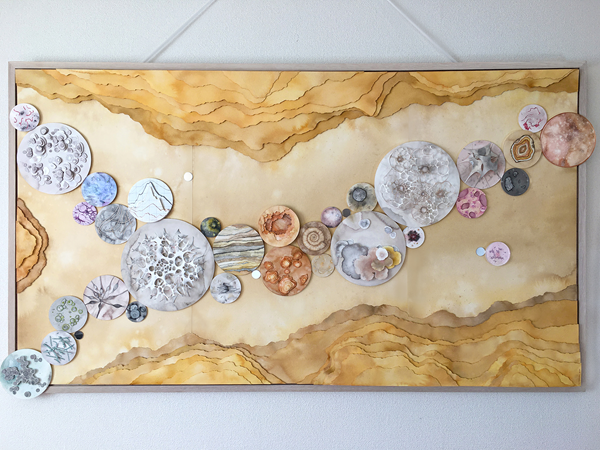
Beginning and lab experience
Following a selection process for ELSI Science-Art Residency under the ELSI's Science-Art Programme, I was given the opportunity to build a collaboration. The partnership began in October 2021 and was coordinated and supported by ELSI science communicator Thilina Heenatigala who guided me along this project trajectory and opened a world of possibilities to be explored.
The initial direction of the collaboration was to focus on ELSI's lab equipment and what they contribute to the advancement of science. Equipment is often in the background but are crucial in the scientific process and discoveries.
For about a month, I was introduced to researchers, lab managers, professors and graduate students, where we developed dialogue to discuss their research areas, academic experience, and lab routines. This period included numerous tours of ELSI labs.
This stage was incredible because I was connected to professionals with different specialities and different research fields when interviewing the scientists. They explained to me about equipment functionalities and their uses in their research. At this point, I could observe not only the equipment itself but also the person behind it.
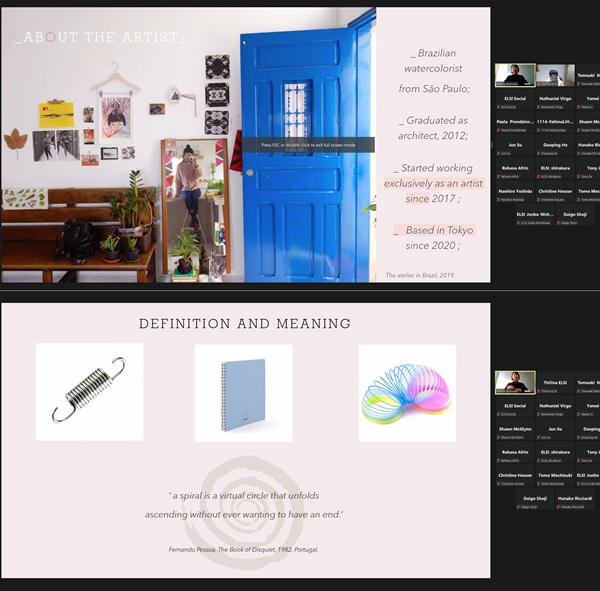
Conceptual development
Having a new understanding of the wide variety of research that equipment could enable and seeing explanatory images of its outcomes made my experience much more accessible.
The same microscope, for example, can allow a geologist to analyse the morphological structure of a stone sample. Still, it also plays a vital role in a biologist's research, capturing images of microorganisms. Perhaps this is a self-explanatory example, but it was enlightening for me.
If at first, I could feel intimidated by not understanding completely some concepts and technologies, little by little, this space of "not knowing" was being filled more and more by curiosity, illustrated by the colourful abstract images that some of those devices could generate. As a concept for this project, I decided that it would be interesting to focus on all possible outcomes that those equipment and lab tools could deliver.
Images of viruses, bacteria, fungi, cells, chemical compounds, plates filled with colonies, among others, filled my imagination and inspired me in the creation process. As a result of this enriching experience in ELSI's labs, and the collaboration of the researchers, who showed and sent me many reference images, I could create a selection of around 30 lenses, which I tried to contemplate some elements of each research that I had contact with, like shapes, patterns and colour pallets.
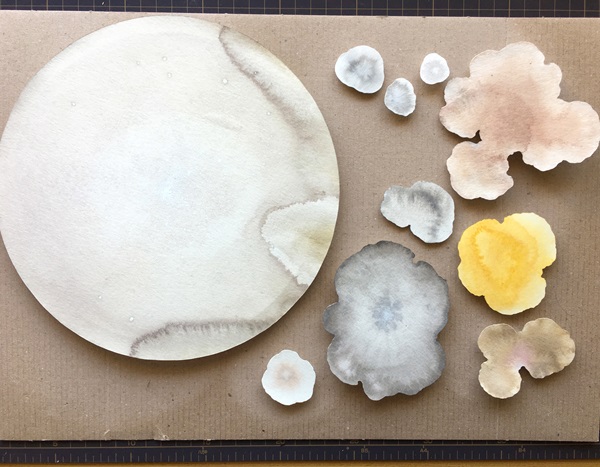
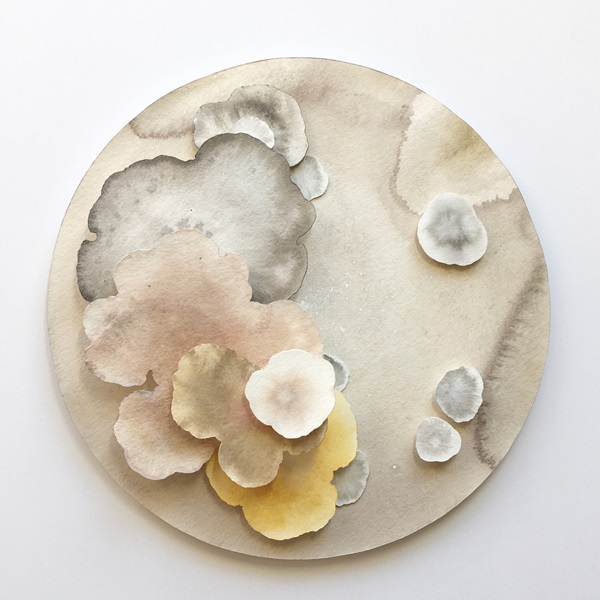
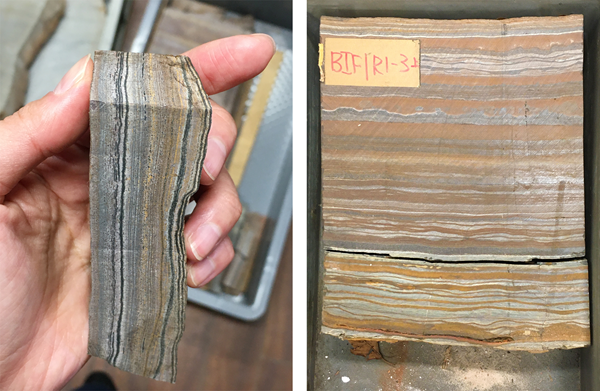
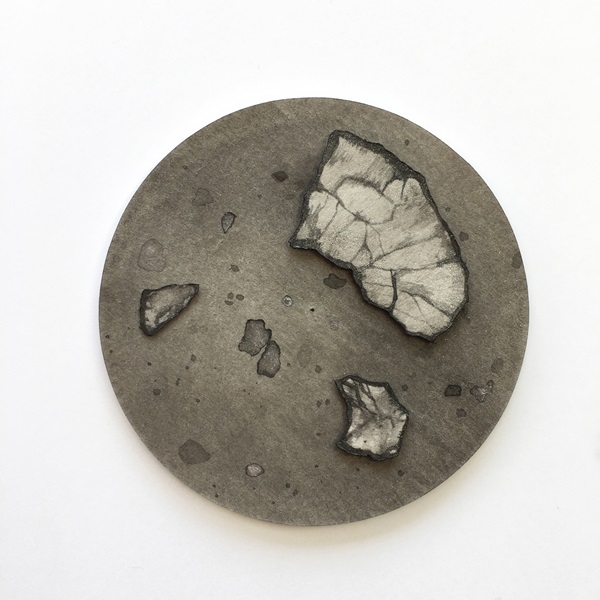
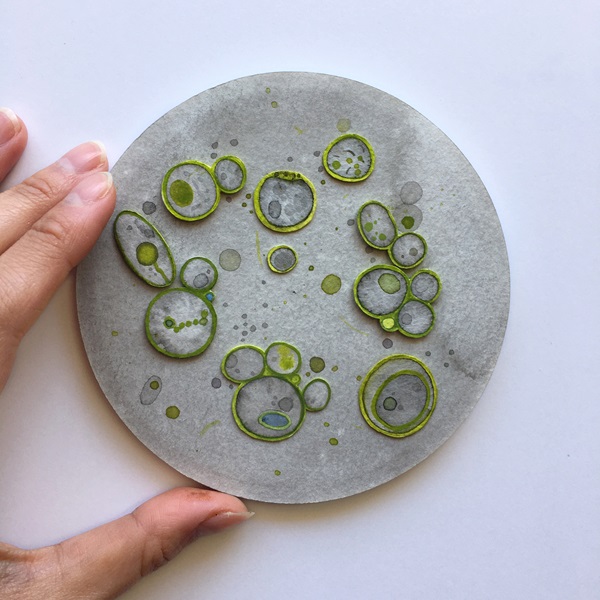
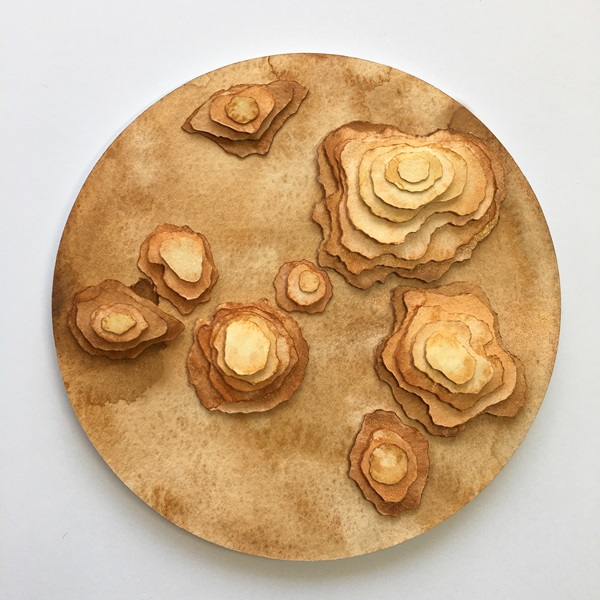
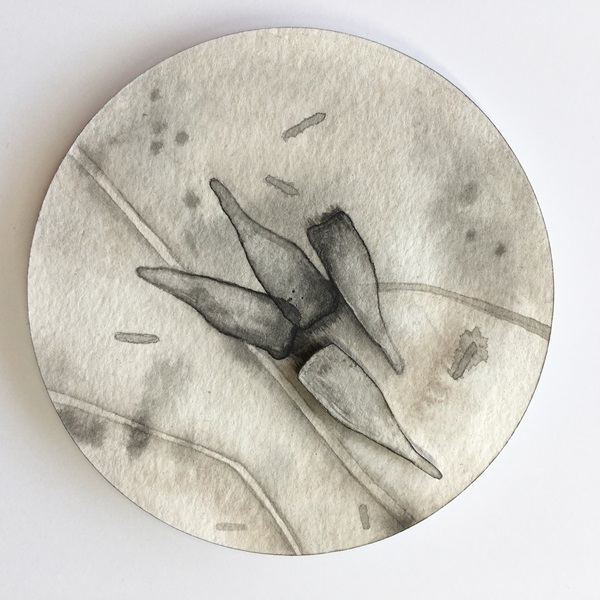
I also felt comfortable wondering about many other possibilities of microorganisms, different worlds, maybe existing only in the imagination.
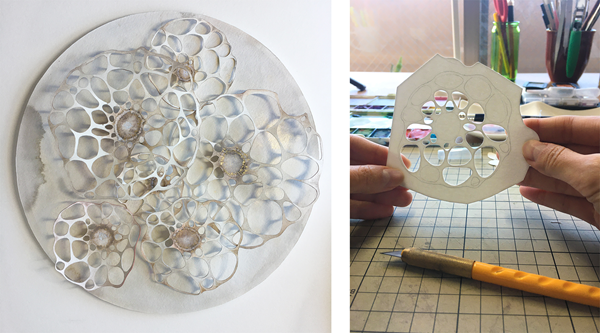
Another topic discussed in one of the interviews that remained in my mind was that sometimes what defines and gives some direction to science research are the many limitations that the researcher may have in this discovery process.
The barriers are fundamental not only because they represent a boundary but also as a way of giving motivation enough until someday, we can overcome them.
In this way, I could add another meaning to the lenses since they also could represent the effort and contribution of each of ELSI's researchers that I met (and researchers in general). One by one, they keep opening new paths, composing together with the human trajectory of knowledge, in this endless search to discover our origins and the origin of everything.
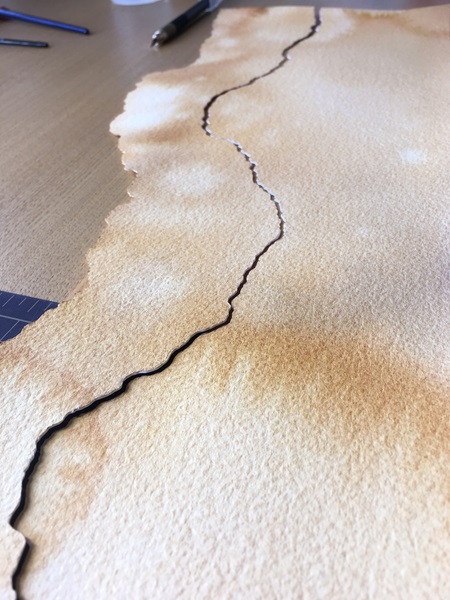
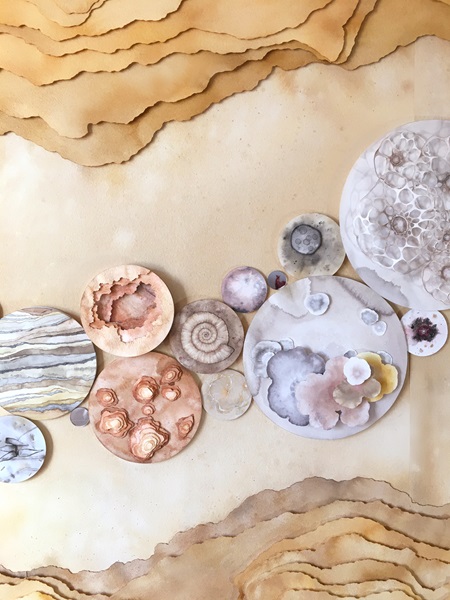
Medium & technique
In this artwork, I worked with watercolour on hand-cut paper in all independent pieces and backgrounds. Each layer of paper is separated by a styrene board, creating a three-dimensional composition. I also applied in this artwork round mirrors and acrylic plates. The process of creating, painting, and composing all the pieces together took more than two months.
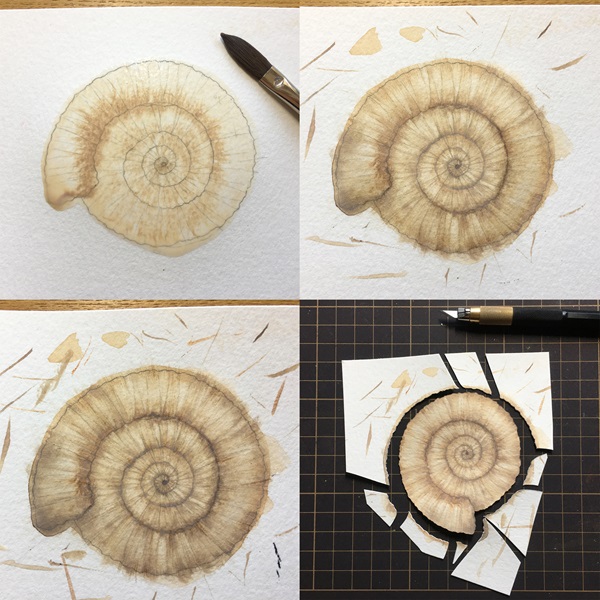
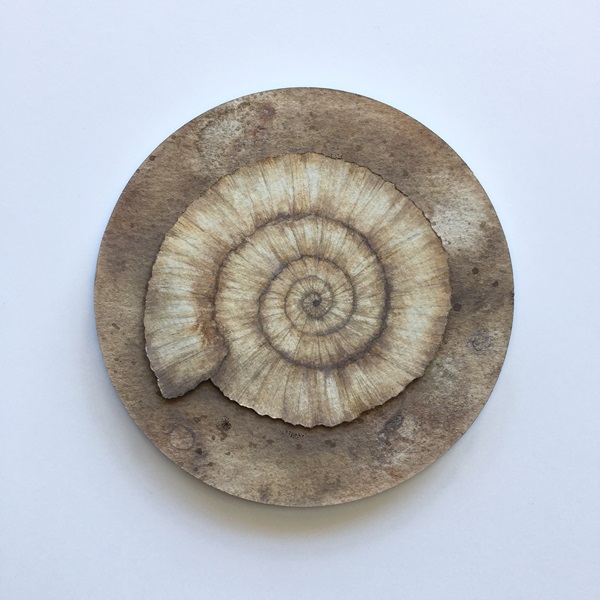
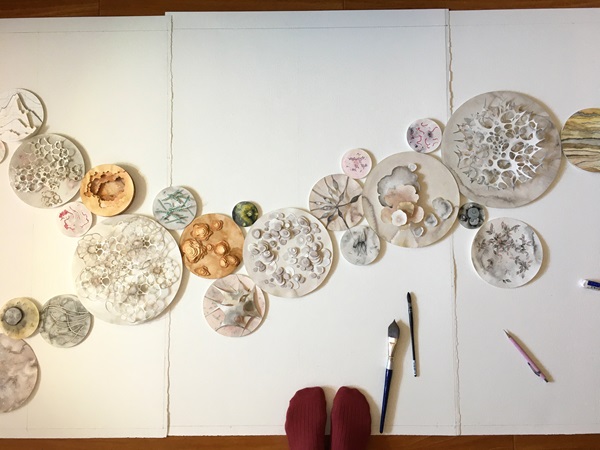
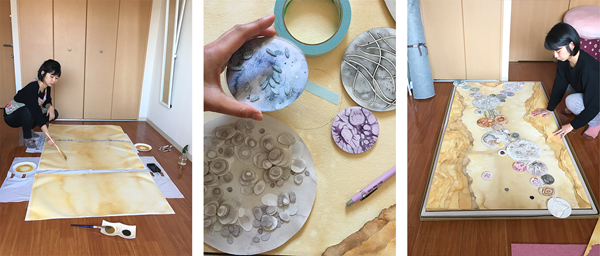
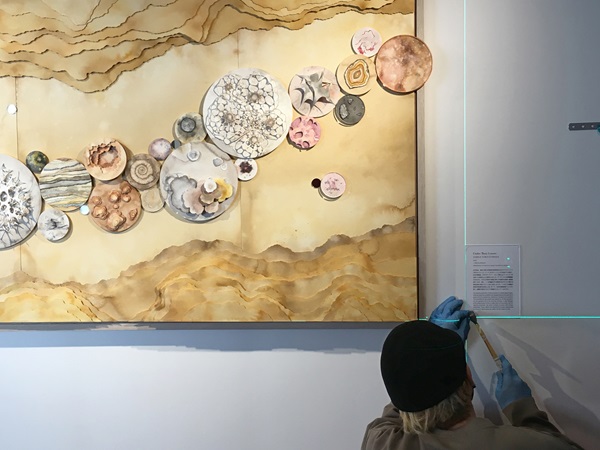
Acknowledgement:
ELSI members for their support and collaboration; Thilina Heenatigala, Junko Nishikawa, Minako Shirakura, Shigeru Masuda, Hitoshi Gomi, Tony Z. JIA, Shawn McGlynn, Irena Mamajanov, Tomoaki Matsuura, Tomohiro Mochizuki, Mayuko Nakagawa, Tomohiko Sato, Fatima Hau Li and Paula Prondzinsky.
---
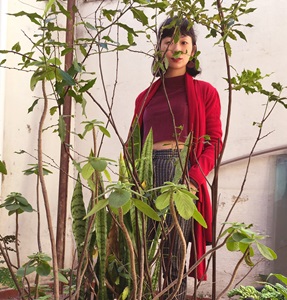
Author's bio:
Jamile Iyomasa is a Brazilian artist, based in Japan. Her main medium is watercolour and the technique used is called ‘diorama’. By painting separately layer by layer on paper, and then overlaying them, she creates a three-dimensional composition. It is through Nature and the observation of its cycles and patterns that she finds the way to express ideas, connections, and life experiences.

